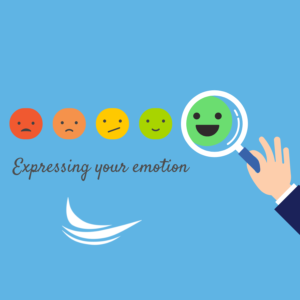 It can be hard enough to regulate one’s own emotions when triggered, but what if you are living in a household where one or more others struggle with emotional reactivity? While individual therapy can be helpful in learning skills such as emotional-regulation, interpersonal effectiveness, and distress tolerance, couples or family therapy sessions may be beneficial as add-on support to improve the quality of the interactions within the family system.
It can be hard enough to regulate one’s own emotions when triggered, but what if you are living in a household where one or more others struggle with emotional reactivity? While individual therapy can be helpful in learning skills such as emotional-regulation, interpersonal effectiveness, and distress tolerance, couples or family therapy sessions may be beneficial as add-on support to improve the quality of the interactions within the family system.
A “high level of expressed emotion level within a family” is not a diagnosis but is categorized as another problem that may be the focus of seeking therapeutic support.
The DSM-5 defines expressed emotion as a qualitative measure of the “amount” of emotion. High-expressed emotion that is directed at a particular family member [the identified patient] within their family environment is a focus of treatment when the intensity level of expressed emotion impacts the course of treatment.
While there are cultural differences in how various families express emotion, looking at cultural norms and how high levels of expressed emotions impact distress can be helpful. There are several main categories of expressed emotion that can be particularly distressing.
Here are some common examples and what they may look like in a variety of family units including families, parent-child dyads, and partnered relationships.
Example: Hostility [family]
Scenario: Struggles within the family system, including parent(s) with a personal history of abuse, family member abusing substances, anger/ hostility within the family system, especially in response to reprimands. A family member (e.g., a teenager) is the identified patient but the parental dynamics such as losing control of temper and rejection are affecting the course of treatment.
Example: Emotional Overinvolvement [adult parent-child dyad]
Scenario: Struggles within a dyad (e.g., mother/ daughter relationship), growing up in an overprotective and sheltered environment, devoted and self-sacrificing parent, high anxiety, perfectionism, and critical to meeting high standards. The child is the identified patient but parental overinvolvement is affecting the course of treatment.
Example: Criticism [couple]
Scenario: Overly critical partner is constantly correcting or blaming their partner for little things beyond their control. They are focused on the “flaws” and are vocal about their disapproval. The identified patient feels the need to defend themselves in response to the criticism which further contributes to tension in the relationship and is affecting the course of treatment.
In all three examples, there are high levels of expressed emotion (hostility, emotional overinvolvement, criticism) that are impacting the identified patient. The patient may be seeking therapy due to symptoms such as anxiety or depression; however, addressing unhealthy dynamics in important key relationships will help provide the ultimate best prognosis in treatment. Providing skills and coping strategies to individuals helps improve outcomes when joining together and practicing skills within their environment and the people in it, such as dyads and families.
Written By : Charlotte Johnson, MA, LPCC
We’re Here to help
Our wellness experts will be happy to take care of you. You can CLICK HERE to schedule an appointment now or call (612)223-8898.
Meet Clinicians
We’re united by our commitment to providing effective, relevant, and innovative mental health support at all stages of your journey. Click Here to find out more about who we are, where we come from, and how we live out CARE’s mission every day.
The professionals at CARE are actively collecting and creating resources to help with what you need. We’re Here for You.



